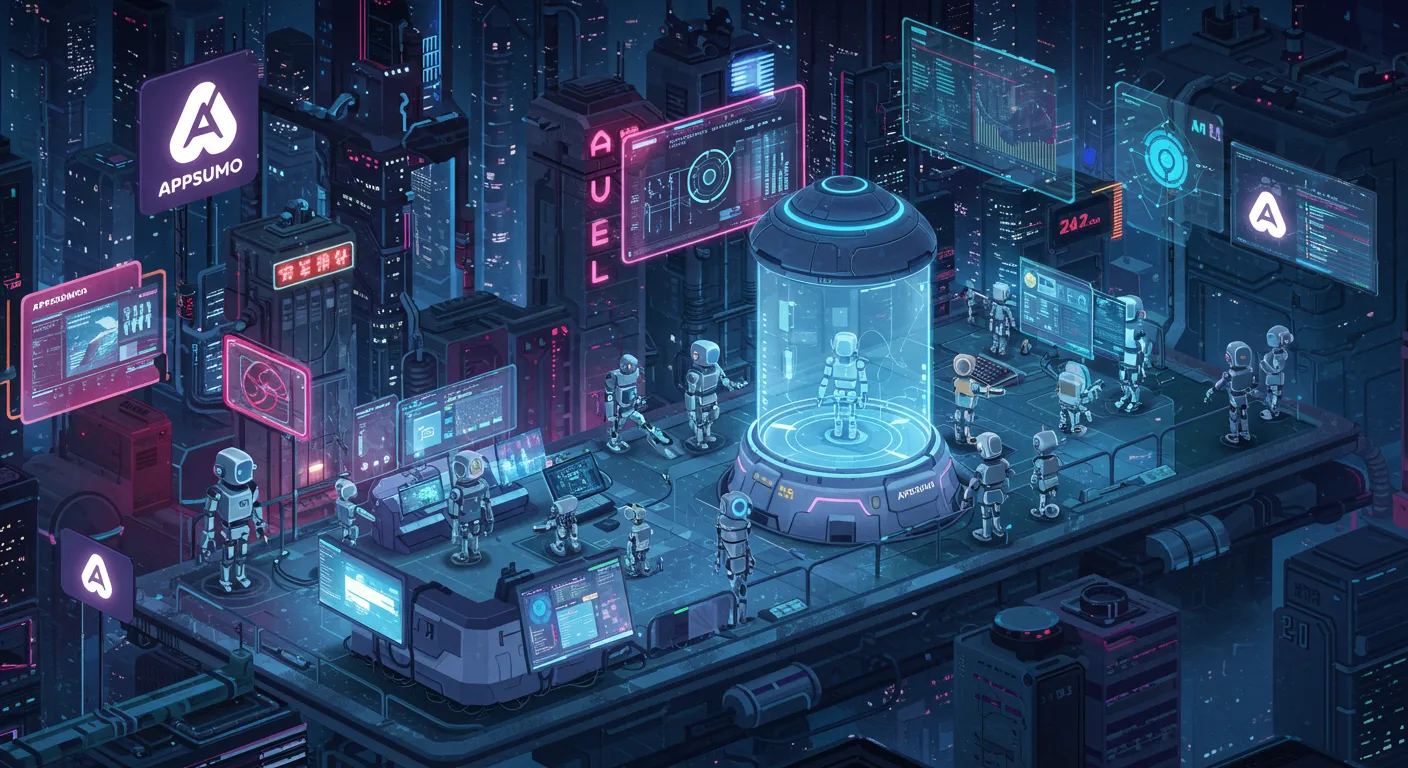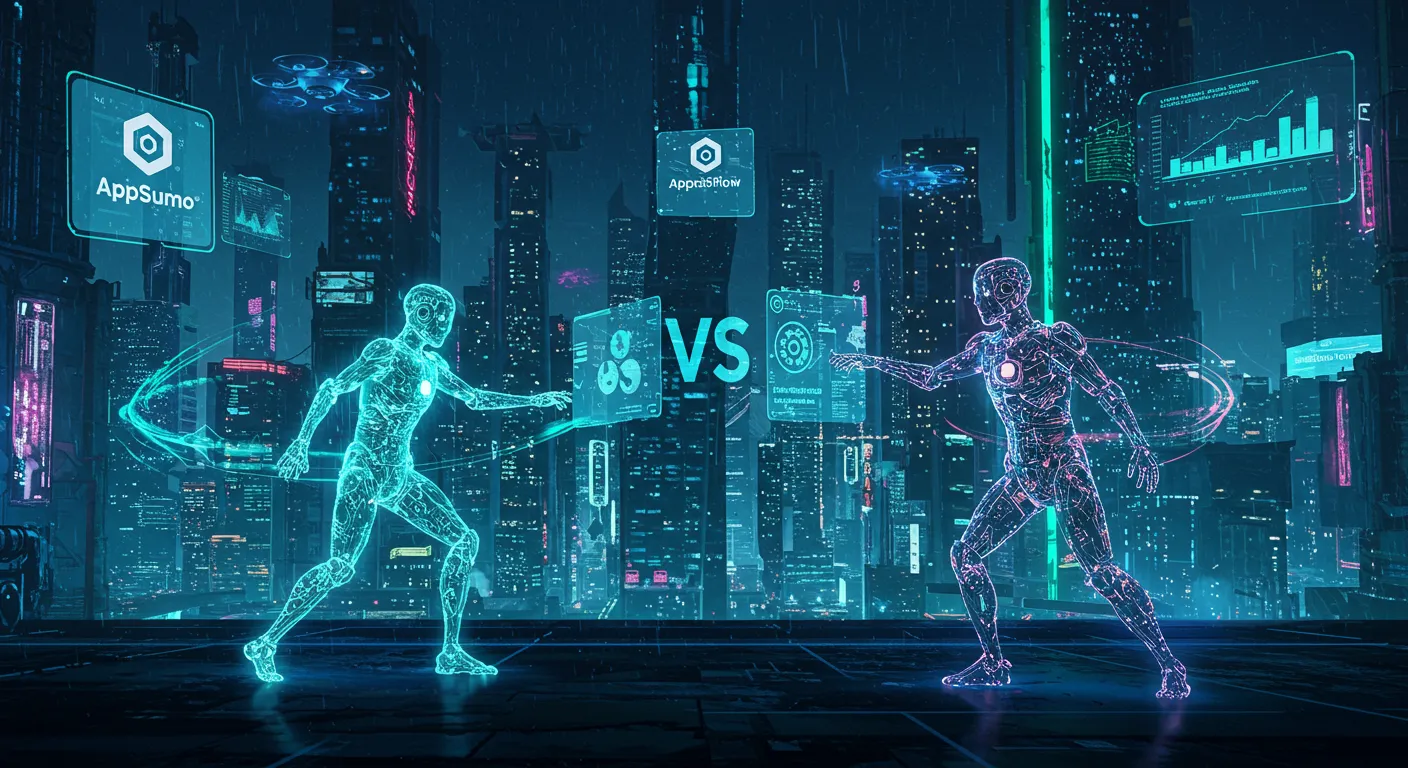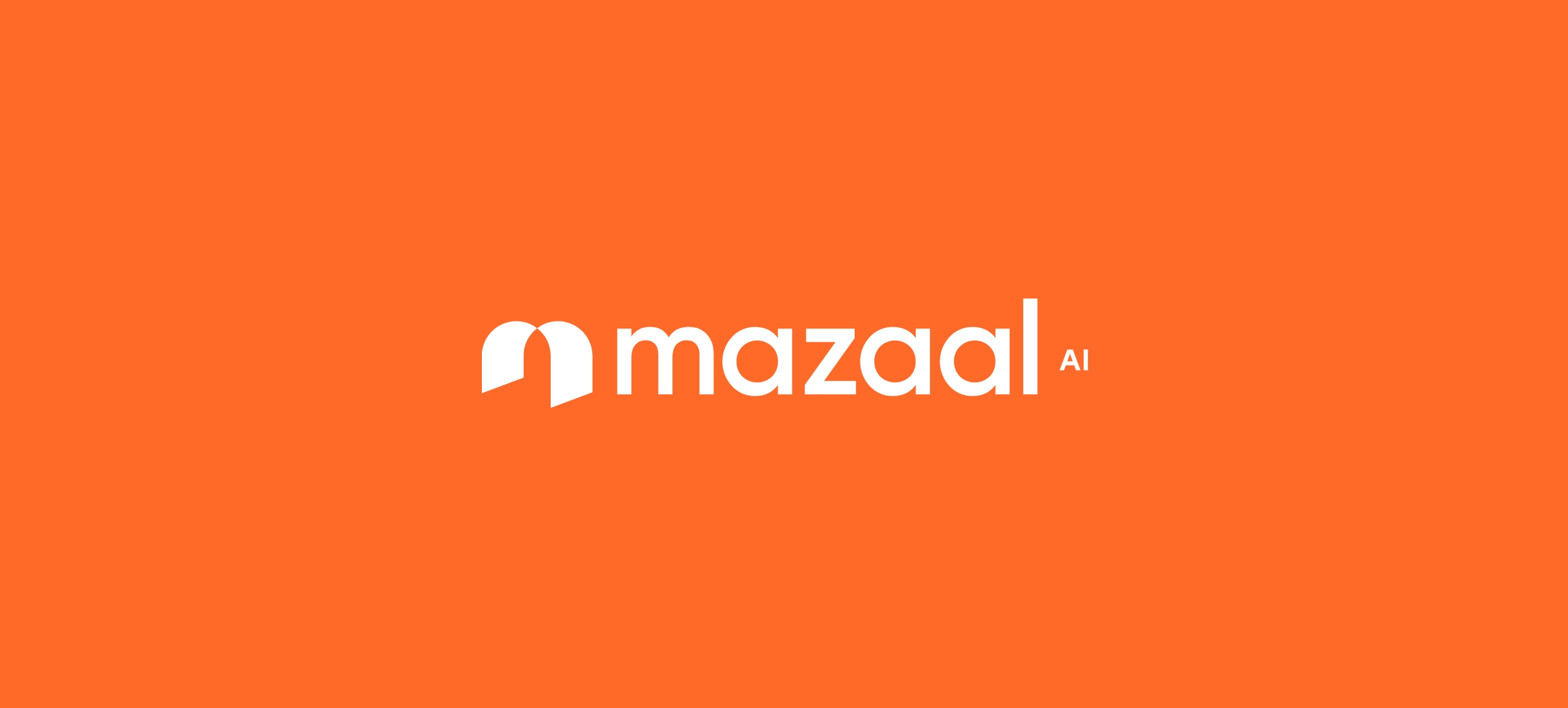Let me tell you about the cup of coffee that changed how I run my morning—and, by accident, my business. One bleary-eyed Tuesday, I tried automating my content publishing through two tools I picked up from AppSumo: AgenticFlow and Mazaal AI. It seemed brilliant at 6 a.m.; by 10, I was deep in a debate about AI agent autonomy, workflow orchestration, and which platform was worth my hard-earned credits. This is that story. And no, I never finished that coffee. Along the way, we'll uncover which AI agent platform gives the best value, and what makes AppSumo the best launchpad for discovering tools like these.
AppSumo: Not Just a Deal Site, It's a Testing Ground for AI Agent Platforms
When most people think of AppSumo, they picture a treasure trove of software deals, but it’s much more than that—especially if you’re interested in AI. Over the past year, I’ve come to see AppSumo as a kind of proving ground for emerging AI agent platforms. It’s a place where new tools get their first real-world users, and where early adopters like me can experiment, break things, and discover what’s possible before the rest of the world catches on.
AppSumo’s unique positioning as a launchpad for AI software is hard to overstate. Unlike traditional software marketplaces, AppSumo curates its offerings, often featuring startups and innovative platforms that haven’t hit mainstream awareness yet. For example, both AgenticFlow and Mazaal AI—two AI agent platforms I’ve tested—were introduced to a wide audience through AppSumo. This early exposure gives these platforms a chance to gather feedback, iterate quickly, and build a user base that’s genuinely invested in their growth.
From my own experience, trying automation software through AppSumo has completely changed how I approach workflow experiments. There’s a certain freedom in knowing you’re not just renting access to a tool, but actually owning it for life. Lifetime deals, a hallmark of AppSumo, mean I can tinker, fail, and try again without the pressure of monthly fees piling up. This has encouraged me to take risks with new AI tools—like setting up complex automations in AgenticFlow or testing simple chains in Mazaal AI—without worrying about cost or commitment.
Research shows that early access to innovative platforms can accelerate learning and adoption. As one founder put it on their AppSumo launch page,
“We’re here to learn from our first users, not just sell licenses.”
That mindset is contagious. It’s not just about getting a good deal; it’s about being part of a community that’s shaping the future of AI automation. And because AppSumo attracts a diverse crowd—from solopreneurs to small businesses—feedback loops are fast and honest, pushing platforms to improve in real time.
Ultimately, AppSumo isn’t just a marketplace. It’s a sandbox for experimentation, a launchpad for innovation, and, for those willing to dive in, a front-row seat to the evolution of AI agent platforms.

What Is An Agentic Flow? Understanding The Basics
Before diving into the world of agentic flows, it’s important to get clear on what we mean by “agents.” In the context of AI and workflow automation, an agent is essentially a software entity designed to perform tasks autonomously. Think of them as digital assistants that can follow instructions, make decisions, and even interact with other systems or agents to get things done. They’re not just static bots; they’re dynamic, often capable of learning and adapting to new inputs.
So, how do these agents actually help with regular tasks? In my experience, agents are incredibly useful for automating repetitive or complex processes. For example, you might set up an agent to monitor your email inbox, extract important data, and then trigger follow-up actions—like updating a CRM or sending notifications. This kind of automation can save hours of manual work, reduce errors, and free up time for more strategic thinking.
Creating an agent doesn’t necessarily require deep technical skills anymore. Thanks to platforms like AgenticFlow and Mazaal AI, building agents has become more accessible. Most modern tools offer no-code or low-code interfaces, where you can define triggers, actions, and logic using simple drag-and-drop workflows. Research shows that no-code AI workflow automation tools are especially beneficial for small businesses, helping them boost productivity without needing a dedicated developer.
But the real magic happens when you start combining agents within robust workflows. This is where the concept of an agentic flow comes into play. An agentic flow refers to a series of interconnected agents, each handling a specific part of a larger process. For instance, one agent might gather data, another analyzes it, and a third generates a report—all automatically, with each agent handing off to the next. Platforms like AgenticFlow are designed with this in mind, supporting multi-agent engines and native workflow orchestration. According to the team behind AgenticFlow, “Workflow orchestration in AI platforms is crucial for efficient automation and task management.”
By chaining agents together, you can build highly flexible and scalable systems. Whether you’re automating simple chains of tasks (as with Mazaal AI) or orchestrating complex, multi-agent workflows (as with AgenticFlow), the possibilities are expanding rapidly. The key is understanding how these agents interact and how to design flows that fit your unique needs.

AgenticFlow vs Mazaal AI: Real-World Workflow Orchestration and Autonomy
When I set out to automate my blog post workflow, I wanted to see how AgenticFlow and Mazaal AI—both available via AppSumo—would handle the real-world messiness of content creation. My process isn’t just a checklist; it’s a mix of research, drafting, editing, and publishing, with a few creative detours along the way. This made for an interesting test of each platform’s strengths and quirks.
Starting with AgenticFlow, I was immediately struck by its drag-and-drop, AI-first logic. Building my workflow felt less like programming and more like collaborating with a digital co-worker. I could visually map out each step—gathering research, generating outlines, drafting sections, and even scheduling posts. The platform’s native workflow engine handled branching logic and unexpected changes smoothly. If I wanted to insert a last-minute research step or tweak the tone of a draft, AgenticFlow adapted without fuss. It felt like the AI understood the “why” behind my actions, not just the “what.”
Mazaal AI, on the other hand, took a more structured, event-driven approach. Its interface is clean and simple, making it easy to set up straightforward automations. For repetitive tasks—like sending notifications or updating spreadsheets—Mazaal AI was quick and reliable. But when I tried to introduce more creative or non-linear steps, things got clunky. The platform’s automation model is built around chaining tasks, which works well for predictable processes but struggled with the improvisational nature of content creation. As research shows, no-code AI tools like Mazaal AI are great for small businesses looking to reduce manual errors, but they can hit limits when flexibility is needed.
One of the most interesting differences was autonomy. AgenticFlow is rolling out a multi-agent system, which means multiple AI agents can collaborate on a workflow, each handling different parts of a task. This opens up new possibilities for complex projects. Mazaal AI, by contrast, sticks to linear task chains—solid for routine work, but less dynamic. According to the developers, AgenticFlow’s extensibility and third-party integrations are designed for users who want more than just basic automation.
In my hands-on experience, AgenticFlow felt like a partner that could adapt and think alongside me, while Mazaal AI was more like a diligent assistant—fast and efficient, but less creative when the workflow veered off-script.

AI Chatbot Deployment: Where the Real Action Happens (or Doesn't)
When it comes to deploying an AI chatbot on a website, the difference between platforms can be night and day. I learned this firsthand while testing AgenticFlow and Mazaal AI, both available through AppSumo. The experience was a real eye-opener, especially if you’re a business owner looking to boost customer engagement or streamline support.
Let’s start with AgenticFlow. Setting up a chatbot here was almost too easy. I clicked through a few options, copied an embed code, and pasted it into my site. That was it—my chatbot was live, ready to answer questions and support visitors. This plug-and-play approach is a game changer, especially for those who don’t want to tinker with code or backend settings. Research shows that platforms offering native, embeddable chatbots can significantly reduce deployment time and lower technical barriers for small businesses.
Mazaal AI, on the other hand, was a different story. While its interface is clean and user-friendly, deploying a chatbot wasn’t part of the package—at least not with the AppSumo deal. Instead, Mazaal AI offers API access, which means you need to build your own chat interface or connect it to another tool. For someone comfortable with APIs, this might not be a dealbreaker. But for most business users, it’s a headache. I found myself searching for workarounds, reading documentation, and wishing for a simple “embed” button.
Why does this matter? Because chatbots aren’t just shiny toys. They’re now pivotal for customer engagement, lead capture, and even content support. Studies indicate that websites with responsive chatbots see higher visitor retention and improved satisfaction rates. If you can’t deploy a chatbot easily, you’re missing out on these benefits.
This leads to a crucial fork in the road for business users. AgenticFlow’s embeddable chat means you can be up and running in minutes, offering real-time support and capturing leads without fuss. Mazaal AI’s API-only approach, especially with no chat feature included in the AppSumo deal, puts more responsibility on the user. As one reviewer put it,
“The lack of a built-in chat option in Mazaal AI is a real limitation for non-technical users.”
For many, that’s the difference between deploying a chatbot today—or putting it off indefinitely.
Wild Card: My Kettle Test & How I Test Real World Scenarios
Let me tell you about the morning I decided to automate my coffee routine—a little experiment I now call “My Kettle Test.” It wasn’t just about saving a few minutes; it was about seeing which AI agent platform, AgenticFlow or Mazaal AI, could handle a quirky, real-world task that actually mattered to me. The idea was simple: could I get my smart kettle machine to start itself, triggered by my calendar and my preferred wake-up time? It sounds like a dream, but with today’s AI tools, it felt just within reach.
I started with AgenticFlow. Its native workflow engine and multi-agent support made the setup surprisingly smooth. I was able to connect my calendar, set up a trigger for my usual wake-up slot, and link it to a smart plug that controlled the kettle machine. The platform’s flexibility let me add a few custom steps, like sending me a notification if the kettle had been on for more than 5 minutes. It wasn’t perfect (the kettle still needed me to load it with water the previous night), but AgenticFlow got me about 80% of the way there. That’s impressive for something so niche.
Then I tried the same thing with Mazaal AI. Here’s where the difference became obvious. Mazaal AI’s clean, simple UI is great for straightforward automations, but when it came to chaining together multiple services and handling custom triggers, it just couldn’t keep up. However, I should clarify that it could just be me reaching my technical abilities around some of their available features. Nonetheless, from a personal view I can tell you that Mazaal AI is best for simple chains and quick automations, especially for small businesses looking to boost productivity without technical headaches. But for my kettle test, it hit a wall. No amount of tweaking could get it to handle the full workflow.
What’s the takeaway? Stats and feature lists are useful, but they don’t always tell the whole story. Sometimes, the best way to evaluate an AI platform is to throw your weirdest, most personal use-case at it. Your workflow is as unique as your business. What matters most is finding the platform that clicks with your real-world needs—even if those needs are as simple (or as complicated) as a perfect cup of tea or hot chocolate, waiting for you at sunrise.
In the end, the “best” platform is the one that fits you. Don’t be afraid to experiment. Sometimes, the wild card tests are the ones that reveal what really matters. Do keep in mind that Appsumo does provide an amazing return policy, with 60 days available for you to test platforms as much as you may need.
TL;DR: If you're stuck choosing between AgenticFlow and Mazaal AI, AgenticFlow usually delivers more robust workflows, superior chat deployment, and broader integration—all for less money, especially via AppSumo. But your business's needs may surprise you—so read on for real-world nuance.



